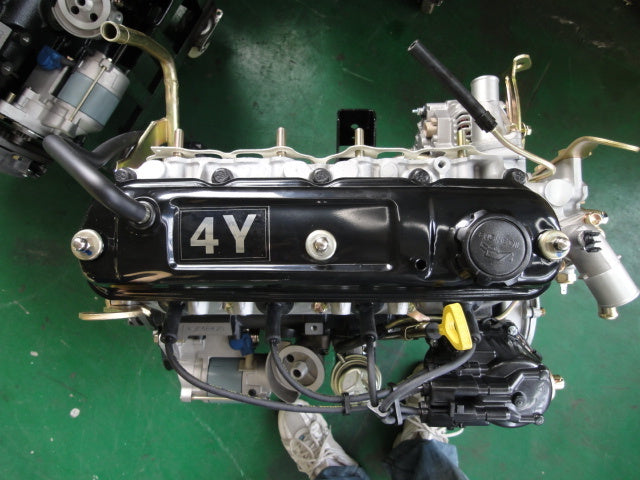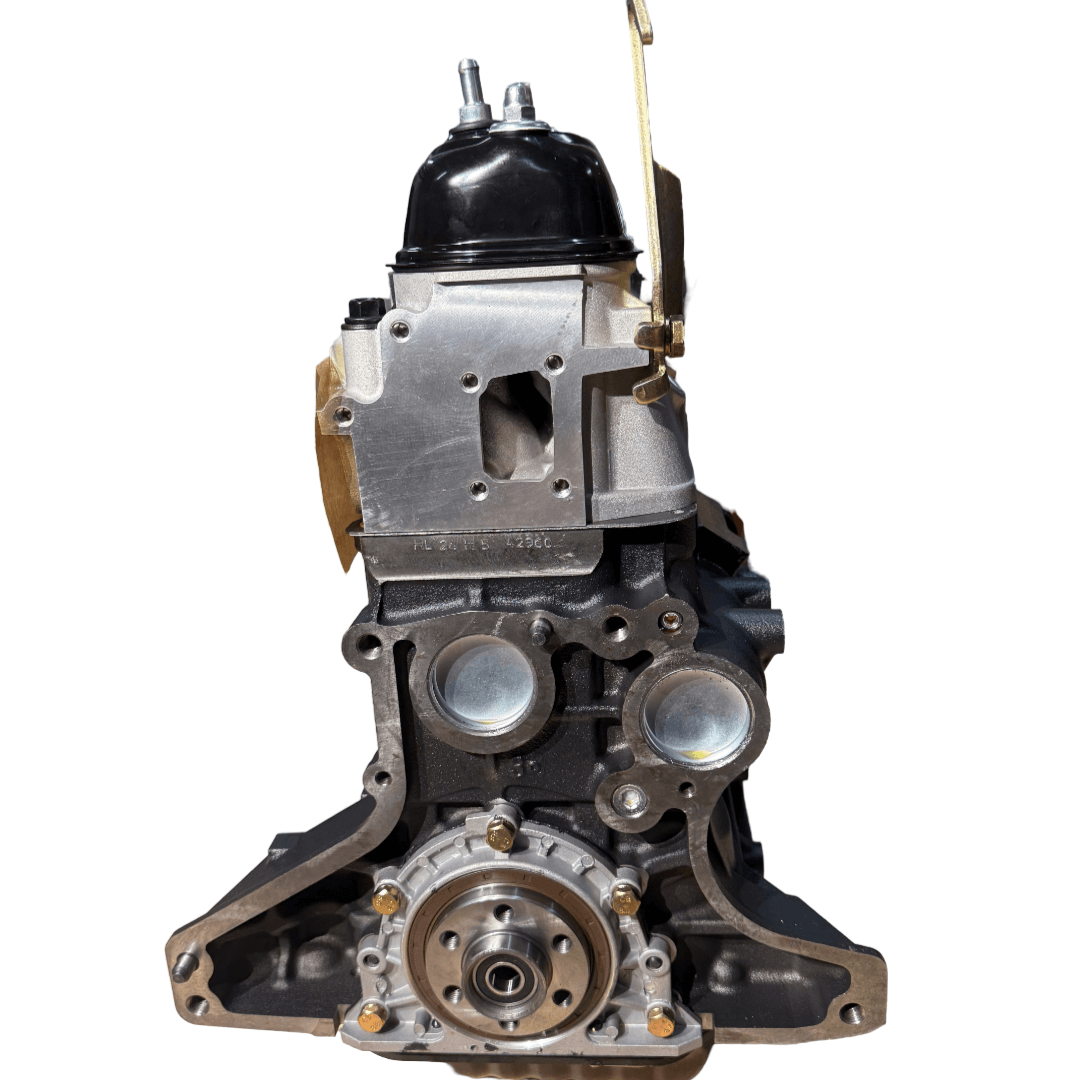Why the 4Y Engine Is Still Popular in Classic and Modern Vehicles
Why the 4Y Engine Is Still Popular in Classic and Modern Vehicles
Blog Article
Discovering the Different Kinds Of Engine: Which One Fits Your Requirements?
In the quest to figure out one of the most appropriate engine type for your details demands, it is essential to assess the unique attributes and benefits of each choice readily available. Inner burning engines continue to dominate because of their reliability, while electrical engines are gaining traction for their sustainability. Crossbreed engines provide a versatile concession, and diesel engines attract attention for their power sought after applications. In addition, alternate gas engines present cutting-edge services, albeit with certain restrictions. Comprehending your priorities will be crucial in this decision-making process, resulting in an expedition of factors that might influence your selection.

Inner Burning Engines
Internal combustion engines (ICEs) are the foundation of contemporary transportation, powering a large range of vehicles from automobiles to aircrafts. These engines operate the concept of converting gas into power through a series of controlled explosions within a combustion chamber. One of the most common sorts of ICEs include fuel engines, diesel engines, and rotary engines, each developed to meet details efficiency and efficiency requirements.
Fuel engines normally use trigger ignition, while diesel engines rely upon compression ignition, causing unique distinctions in fuel effectiveness and power output (4y engine). Rotary engines, or Wankel engines, use a compact design and smooth procedure, however are much less generally utilized in mainstream applications
ICEs have actually gone through substantial developments in technology, consisting of the introduction of turbocharging and fuel injection systems, which enhance total performance and performance. In spite of their efficiency enhancements, ICEs face boosting examination because of their ecological influence, especially pertaining to greenhouse gas exhausts. As the automotive industry advances, the future of ICEs stays a topic of debate, stabilizing efficiency, effectiveness, and environmental considerations. Nonetheless, they remain to play a crucial role in international transport framework.
Electric Engines
As issues concerning environmental sustainability and fossil gas reliance expand, electric engines have actually arised as an engaging choice to interior combustion engines. These engines make use of electric motors powered by batteries or gas cells, offering a cleaner and more reliable motive powers.
One of the main advantages of electrical engines is their reduced exhausts. Unlike conventional engines that melt nonrenewable fuel sources, electric engines produce absolutely no tailpipe emissions, dramatically reducing air pollution and contributing to boosted public health. Additionally, the efficiency of electric motors typically surpasses that of inner combustion engines, converting a greater proportion of energy from the source of power into useful energy for movement.
Electric engines are likewise notable for their quiet procedure, making them ideal for metropolitan settings. 4y engine. The simplicity of their design causes fewer relocating components, which can cause decreased maintenance costs and increased integrity in time
However, obstacles remain, including battery manufacturing effects, billing facilities, and array limitations. Despite these obstacles, the growing financial investment in electrical lorry technology and renewable resource resources factors towards an encouraging future for electric engines, placed to play an important function in the shift toward sustainable transport.
Hybrid Engines
Mixing the benefits of both electrical and standard interior burning engines, hybrid engines stand for a functional service in the mission for effective and lasting transportation. These engines integrate a fuel or diesel engine with an electrical motor, enabling improved gas effectiveness and reduced emissions compared to traditional automobiles.
Hybrid engines operate in a number of settings, using the electric motor for low-speed driving and the internal burning engine for greater rates or when even more power Visit Your URL is required. This vibrant procedure not only enhances fuel economy yet additionally contributes to a smoother driving experience. Regenerative braking is another important attribute, recording energy generally shed throughout stopping and redirecting it to recharge the battery.

As consumers significantly focus on eco-friendliness, hybrid engines stick out as a sensible choice, providing a reliable equilibrium of efficiency, efficiency, and environmental duty. This flexibility makes them suitable for city commuting and long-distance traveling alike.
Diesel Engines
Efficiency and power are trademarks of diesel engines, which have long been preferred for their robustness and gas economic situation. These engines operate on the concept of compression ignition, where air is compressed to a heat prior to fuel is injected, sparking it without the need for ignition system. This process enables diesel motor to achieve higher thermal performance compared to gas engines, translating into far better gas gas mileage and reduced co2 emissions.
Diesel engines are specifically appropriate for sturdy applications such as vehicles, buses, and industrial equipment, where torque and sturdiness are paramount. Their design typically consists of stronger components to hold up against the higher stress generated throughout operation, resulting in longer service life and minimized upkeep prices.

Different Fuel Engines
While diesel motor have long dominated the landscape of durable source of power, alternate fuel engines are acquiring grip as sensible options for an extra sustainable future. These engines make use of a variety of gas, such as compressed gas (CNG), hydrogen, lp, and ethanol, aiming to reduce greenhouse gas discharges and reliance on nonrenewable fuel sources.
One significant advantage of different gas engines is their prospective to reduced carbon impacts. For instance, CNG engines discharge less pollutants compared to standard diesel motor, making them ideal for urban transportation systems and fleets looking for to improve air quality. Ethanol, originated from biomass, not only lowers discharges yet likewise sustains farming economic situations.
Hydrogen gas cells represent an innovative development in this realm, offering zero-emission power with a chain reaction between hydrogen and oxygen. Nonetheless, difficulties such as infrastructure growth and manufacturing costs continue to be challenges to prevalent fostering - 4y engine.
Conclusion
Finally, selecting the proper engine kind necessitates cautious factor to consider of details demands and preferences. Internal combustion engines use integrity, while electrical engines focus on sustainability and reduced maintenance. Hybrid engines combine the advantages of both, improving effectiveness, whereas diesel motor supply premium power and torque for heavy-duty applications. Alternative fuel engines present environment-friendly choices, albeit with prospective facilities difficulties. Eventually, a thorough analysis of driving routines and ecological worths will help with a notified decision concerning engine selection.
Crossbreed engines use a flexible compromise, and diesel engines stand out for their power in requiring applications. The most usual types of ICEs include fuel engines, diesel engines, and rotating engines, each developed to meet certain efficiency and explanation performance demands.
Unlike conventional engines that melt fossil gas, electrical engines create no tailpipe discharges, substantially decreasing air contamination and adding to boosted public wellness.Crossbreed engines run in numerous settings, making use of the electrical motor for low-speed driving and the inner combustion engine for greater speeds or when more power is required. Hybrid engines integrate the benefits of both, boosting performance, whereas diesel engines give remarkable power and torque for durable applications.
Report this page